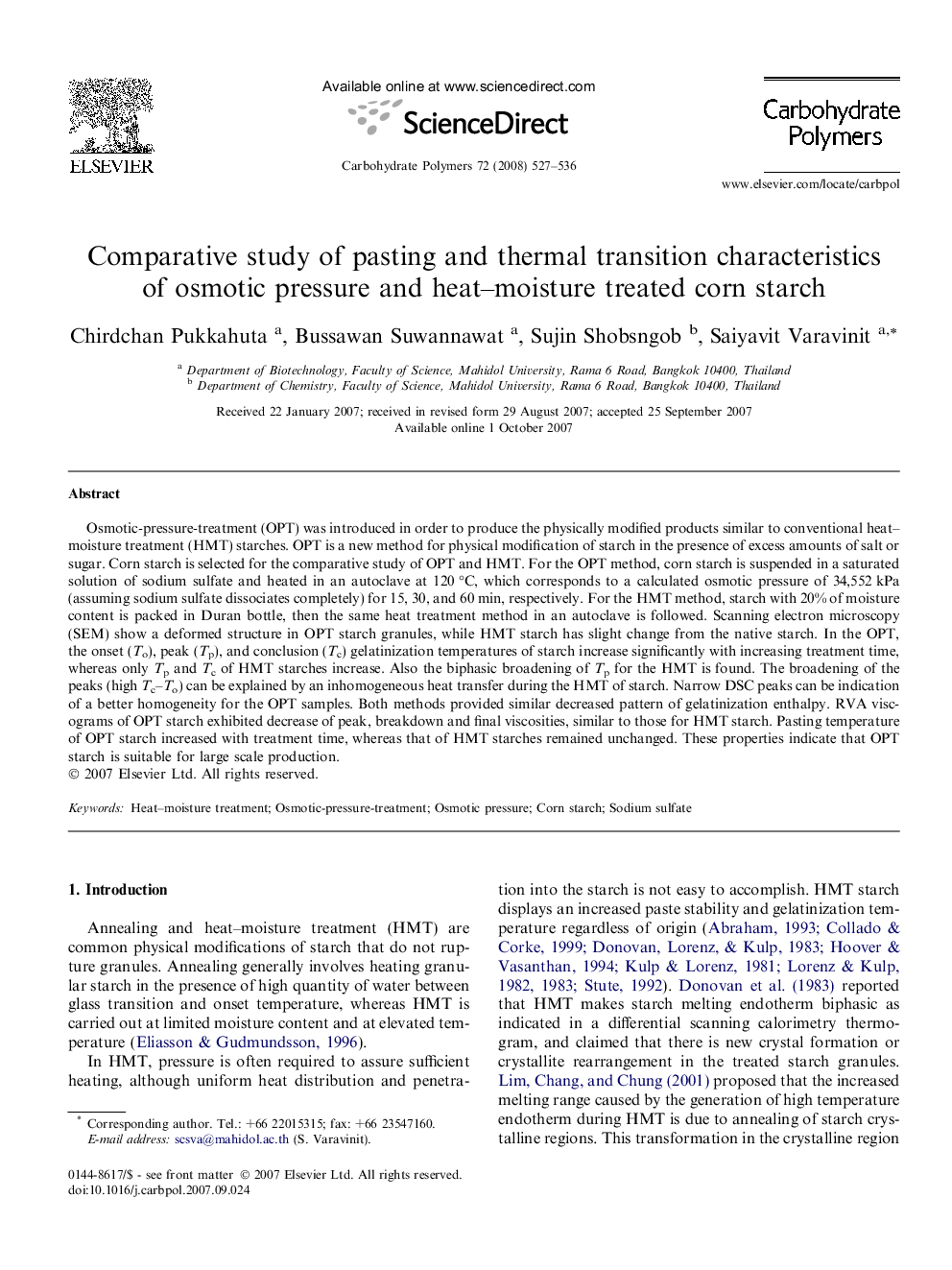| کد مقاله | کد نشریه | سال انتشار | مقاله انگلیسی | نسخه تمام متن |
|---|---|---|---|---|
| 1386500 | 982511 | 2008 | 10 صفحه PDF | دانلود رایگان |

Osmotic-pressure-treatment (OPT) was introduced in order to produce the physically modified products similar to conventional heat–moisture treatment (HMT) starches. OPT is a new method for physical modification of starch in the presence of excess amounts of salt or sugar. Corn starch is selected for the comparative study of OPT and HMT. For the OPT method, corn starch is suspended in a saturated solution of sodium sulfate and heated in an autoclave at 120 °C, which corresponds to a calculated osmotic pressure of 34,552 kPa (assuming sodium sulfate dissociates completely) for 15, 30, and 60 min, respectively. For the HMT method, starch with 20% of moisture content is packed in Duran bottle, then the same heat treatment method in an autoclave is followed. Scanning electron microscopy (SEM) show a deformed structure in OPT starch granules, while HMT starch has slight change from the native starch. In the OPT, the onset (To), peak (Tp), and conclusion (Tc) gelatinization temperatures of starch increase significantly with increasing treatment time, whereas only Tp and Tc of HMT starches increase. Also the biphasic broadening of Tp for the HMT is found. The broadening of the peaks (high Tc–To) can be explained by an inhomogeneous heat transfer during the HMT of starch. Narrow DSC peaks can be indication of a better homogeneity for the OPT samples. Both methods provided similar decreased pattern of gelatinization enthalpy. RVA viscograms of OPT starch exhibited decrease of peak, breakdown and final viscosities, similar to those for HMT starch. Pasting temperature of OPT starch increased with treatment time, whereas that of HMT starches remained unchanged. These properties indicate that OPT starch is suitable for large scale production.
Journal: Carbohydrate Polymers - Volume 72, Issue 3, 16 May 2008, Pages 527–536